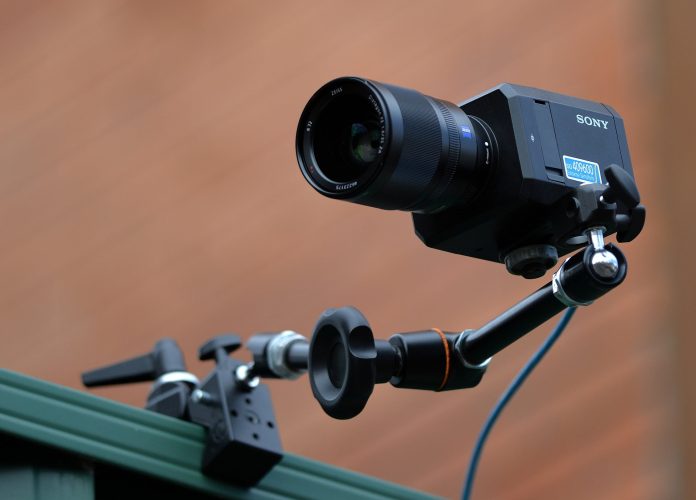Video surveillance is becoming more pervasive and the more automated management systems become the greater the requirement becomes for high quality video footage that allows the best possible situational awareness for security response teams and for later investigations. High quality means higher resolution – anything above 3MP.
RESOLUTION is vital in video surveillance – it’s not everything all the time but all other things being equal, more resolution is better. It used to be that end users desiring high resolution video surveillance were required to invest enormous sums of money, or compromise on frame rate, bitrate or storage but times have changed over the past 5 years. You can know buy a 4K CCTV camera for an extremely competitive price that offers full frame rate, good low light performance, moderate bitrates, thanks to smart codecs and H.265.
According to BGWT’s Mark Shannon, the benefits of high resolution video surveillance are numerous and relate to image clarity – they include the ability to be able to identify someone accurately when deeper into a scene and the ability to use footage in analytic applications.
“To be able to accurately reflect what the scene looks like or looked like is the ultimate goal of high definition video surveillance,” says Shannon. “But there is more to this than simply more pixels mean a better image. Cameras may have similar matching specifications on paper but often they will not present the same image quality.
“Too many times we have seen poor results in a camera that boasts high definition resolution. In fact, we have seen lower resolution cameras proving to be better than some of the higher resolution cameras. There are other things to consider, too. What are 3MP, 4MP, 5MP or other resolutions? Industry standards have been set for good reasons and for the last few years now, when we moved away from the 4:3 aspect ratio to the 16:9 aspect ratio. Most importantly, we used industry standards such as 720P, 1080P and now 4K. The 3MP, 4MP, 5MP and the like are not industry standards and they generally have a 4:3 aspect ratio. Most 1080P cameras use a 3MP image sensor and crop accordingly.
“A lot of 4K cameras use a 12MP sensor (4:3 aspect ratio) and crop it to 16:9 aspect ratio and produce the industry standard 4K (UHD) images. So, when you see a 3MP or 4MP etc. camera, you need to ask more questions. The SecTech Roadshow’s camera shootout helped provide some idea of camera vs camera in specifications. While the benefits are high resolution are numerous, you need to choose wisely.”
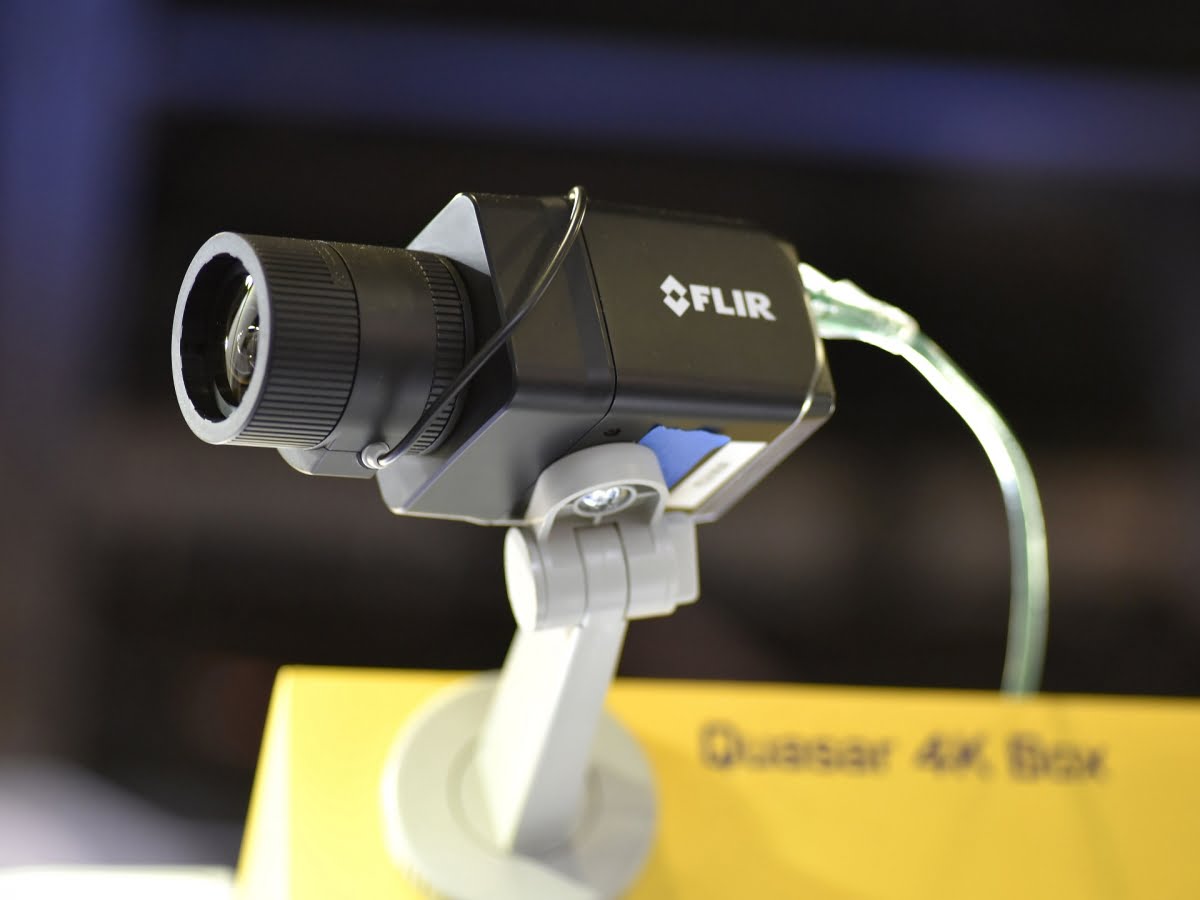
According to Shannon, more is not always better as it comes at the cost of something else.
“More pixels give higher definition but require greater levels of light to reproduce the image,” explains Shannon. “This resolution also comes courtesy of more data, which directly relates to higher video stream rates affecting network bandwidth, video data storage and extra resources rendering the footage on computer displays. So, more is not always better and any good surveillance expert will advise that every location that requires a video surveillance camera will have an ideal camera to meet the customers’ requirement.
“Further, sometimes a higher definition camera will not perform as well in video reproduction as a lower definition camera and this can be due to poor camera quality, lighting and other factors. Just because the specification sheet states a value, doesn’t mean it does it as well as another camera. Do some research and ask for assistance and guidance. We are here to help.”
Is it fair to say that there are almost always one or two camera views in every CCTV application that should be high resolution?
“Absolutely,” agrees Shannon. “When a system is designed, consideration is taken to determine the needs of the customer, the location of the camera, the environment of that location, (lighting, scene complexity, focal length, indoor/outdoor etc.) and what level of detail the customer wants to capture. That will determine the right camera for the right application.
“Generally speaking, cameras placed in entry and exit points should generally be high definition as to be able to capture facial details to ensure the best possible detection of people entering and exiting the premises. The cost of having every camera high definition is on most occasions prohibitive. However, if you design the system with a logical and an analysed risk approach, you should be able to factor in a few high definition cameras, giving your customer the balance between performance and cost to achieve the right images in the right areas. There are calculators to determine the pixel-per-foot or pixel-per-metre and recommendations as to the right amount for the right application. This helps determine which cameras need to be high definition.”
Shannon says there’s no perfect application for high resolution video surveillance, it comes down to the needs of the application.
“I believe high definition video surveillance should be in every installation – it’s the quantity of these cameras that will vary,” he explains. “Certain types of applications perform far better in high definition/resolution video surveillance. Face recognition, video analytics and money handling applications are three areas that benefit greatly from this technology.
“Matching lenses are a critical part to ensuring the image is not impinged by poor optics. A very simple analogy would be the human eye looking through a pane of glass. If the glass is not cleaned or it is of poor clarity or construction, the image will reflect this poor quality. You could say that some high definition cameras are let down by the lens selection. We have even seen some low-cost cameras attempting to put a very high cost lens on to the camera to help improve the camera’s capabilities. In this case, getting the better camera in the first place will be more cost effective.”
Installers building CCTV solutions with higher resolutions need to take a number of key considerations into account comes to things like bitrate, storage capacity and low light performance, according to Shannon.
“There are 4 main components to an application – research, design, plan and document properly,” he says. “If we assume that you have chosen the right cameras for the right locations based upon your customer’s requirements, including lighting, camera housing, etc, it’s very important to utilise the camera manufacturer’s bitrate calculator and begin to collate these into a table to determine video streams throughout the network.
“Don’t forget uplinks from one switch into another. These links need to be calculated to ensure they are not over utilised otherwise dropped data will occur and that means loss of video footage. Eventually, this calculation turns into a total storage figure per recording server. Underestimating this figure reduces your 30-day required storage and the system comes up short. Remember; research, design, plan and document. Once you have created the first set of documents, use it as a template to be reused for other jobs. Don’t forget, your research into the right camera is not just about looking at the specification sheet or price.”
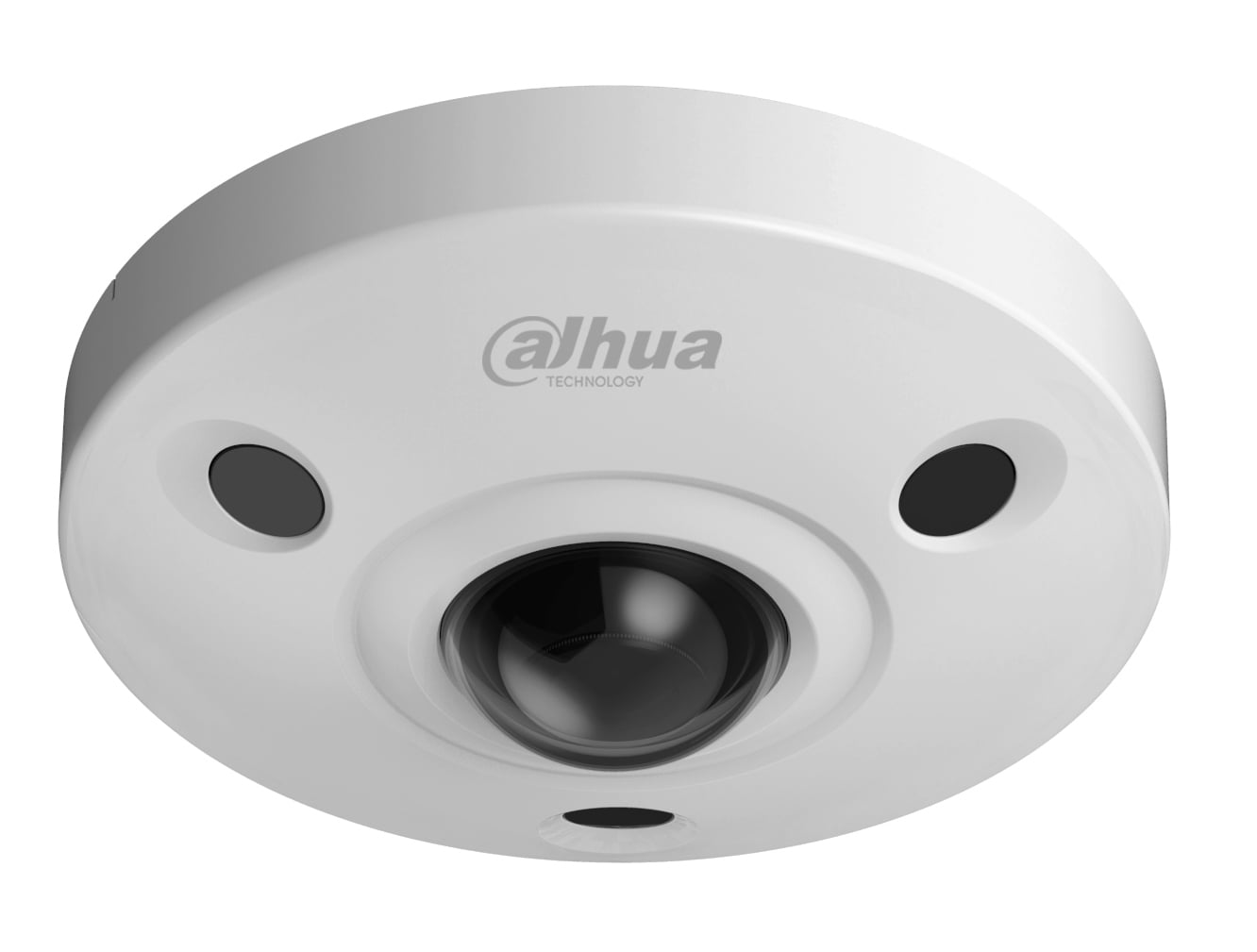
Shannon is not convinced there is a sweet spot with high resolution video surveillance that gives the best balance of high resolution, live frame rate, cost and modest bitrate.
“That resolution sweet spot is a moving target, always moving up in numbers!” he laughs. “Not too long ago, 4CIF or D1 was the pinnacle for the industry and then 720 and 1080p came along. Now it’s 4K, which is the next industry standard above 1080P. Sales suggest that 1080p remains the resolution of the majority of cameras sold but that 4K is fast becoming the new high definition option of choice.
“4K is certainly the next camera-type in the industry standards. Pricing too has come down on 4K cameras and performance has gone up, fast making it the best performance/cost-based choice for high definition. Something to note is that Quad HD or 1440p resolution has popped up but it is not within the common standards. It sits between 1080P and 4K.”
Shannon believes improvements in compression, including H.265 and smart codecs, are making higher resolution video streams easier for integrators to wrangle in real world applications.
“These are critical to the success of these high definition cameras,” he says. “Helping reduce bit rates by smart codecs and better compressions give benefits from the camera and propagating all the way to the storage. In fact, I would advise that if cameras don’t properly employ these technologies, consideration should be given to not choose them. Some choose a camera on price for the resolution they require.
“However, no consideration is given to the ongoing cost of the camera and there are several important factors. The storage of the footage for the camera is one of these and unless the bit rate is also reduced on these high definition cameras, the total cost of ownership increases surreptitiously. Extra HDDs for storage also means extra rack space, energy consumption and extra cooling.
“All these costs are not seen in the camera up front cost. H.265 alone practically reduces storage by 25-30 per cent. Smart codecs done right can keep the image as it should be but reduce the bitrate though mind you, smart codecs done wrongly, can destroy the image. Have I said his already? Research, design, plan and document! Giving ourselves a little pat on the back, our team at BGW Technologies is here to help you understand and make the most of these improvements.”
Over at Bosch Security Systems, Will Hasna, video systems product manager argues one of the main benefits is the ability to record a greater amount of detail within a given scene and having the ability to digitally zoom in on recorded video and still retain the clarity to be able to identify items or faces etc with minimal pixilation.
“This also means that in some installations you can reduce the number of cameras required to record the detail you need, which in turn reduces the infrastructure, (housings, cabling, network ports, switches, licenses for VMS’s etc) that is required to deploy the system,” Hasna explains. “This can lead to a significantly reduced cost to deploy a given system.”
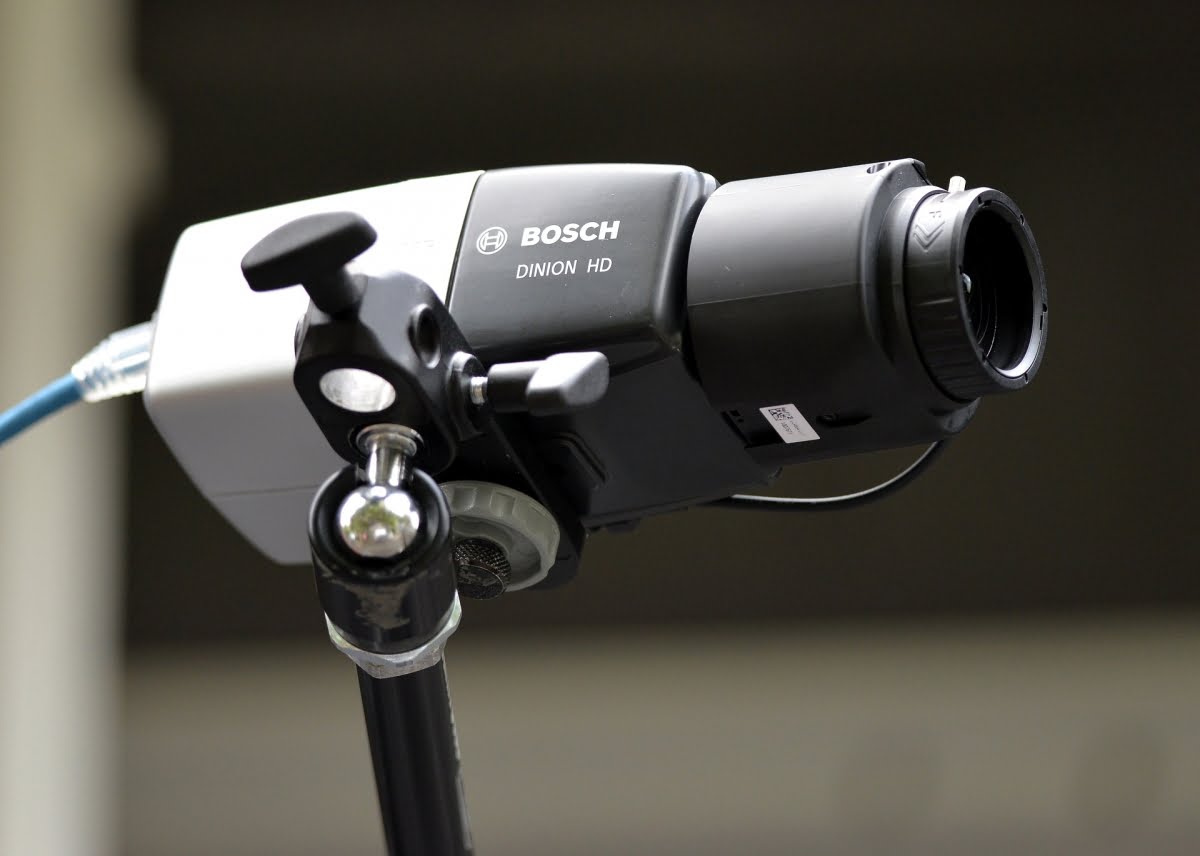
According to Hasna, high resolution is a matter of balancing day and night performance, hardware cost, installation cost and operational requirements
“High resolution really is a balancing act,” he says. “While higher resolution camera technology is improving day by day, there is still a trade-off to be had. You tend to find that the higher the resolution of a camera, the more challenging it is for it to have really strong low light performance. Higher resolution cameras also may have lower frame rates.
“Things like bandwidth also have to be considered, even with the introduction of H.265 and smart codecs – generally speaking, the higher the resolution, the higher the bandwidth, and this impacts the cost of things like network infrastructure and storage. If you are looking for live viewing in high resolution, you will also need to ensure that the supporting workstations, graphics cards, monitors etc are designed to handle the streams, especially if you plan on displaying multiple cameras on a given display. Higher resolution cameras are typically more expensive than SD or HD cameras.”
From Hasna’s point of view there may not be a need for high resolution cameras in every CCTV solution.
“It depends on the application, lens selection, FOV target and size, etc,” he argues. “For example, if your aim is to capture a person’s face coming through a narrow doorway, with the camera installed only a few metres away, then a 1.3MP or 2MP might suffice without going to the added cost of higher resolution cameras and the added infrastructure required to support them. What you are ultimately setting out to achieve is to have the right number of pixels on the target area to ensure you achieve the outcome you want.
“A perfect application for high resolution CCTV cameras is any application where there is a need for a higher level of pixels required on the target area. You may consider areas with some ambient lighting to support with day/night performance if that is required. Typical applications we see are wider angle views in large foyers or thoroughfares where there is a lot of activity happening within the scene.”
Installers need to consider bitrate, storage capacity and low light performance when thinking about high resolution, Hasna says.
“Fundamentally, you need to understand how the client will be using the system and what they are trying to achieve,” he explains. “What is the network infrastructure being deployed? Are there remote cameras with constrained network links for example? Or do they plan to push video to a mobile device? You may need to look at devices that can transcode the video and manage the higher resolution stream according to the available bandwidth.
“The file sizes will generally be higher with higher resolution streams and therefore more storage may be required. You need to consider how the camera handles challenging lighting conditions – it’s no good having a 4K camera that struggles at night if the aim of the camera is to protect a perimeter with no ambient lighting, for example.”
Improvements in codecs and compression technologies can be a double-edged sword, according to Hasna.
“While the advancement of compression technologies, H.265 and smart codecs and the like mean that we are seeing low bitrates from higher resolution cameras, it may not mean that it is necessarily easier to implement,” he says. “Integrators need to consider not only whether the camera has smart codec or H.265 support, but whether the VMS is able to support these codecs, and the compatibility to the camera and thus gain the added benefit. Considerations also need to be given to added resources that may be required on a client machine in de-coding these codecs as well. It again becomes a juggling act. However, overall with computer hardware getting better and VMS support for these codecs also improving, this should get easier with time.
At CRK, Steve Maynard says high resolution technology certainly has its place.
“For example, using Dallmeier’s new Runway Panomera system, we can now economically view several kilometres of airport runway with a single camera mounting,” he explains. “Multiple sensors combined into one camera technology can be displayed as one image, in real time, live or recorded video. These sorts of ultra-high-resolution products have unlimited applications for covering larger areas.”
Maynard argues that when it comes to building a high-resolution CCTV solution, all the same rules apply as apply to lower resolution systems.
“Surveillance design is always a question of practically matching the risk to be managed with appropriate tools,” he says. “How easy it is to use those tools, no matter how large or small the surveillance task. Generally, a mix of resolutions is required.”
Is it fair to say that there are almost always one or two camera views in every CCTV application that should be high resolution?
“It totally depends on the application,” Maynard says. “Often, a high-resolution solution will complement the work with little cost variation in the overall project. It makes sense to exceed customer expectation wherever possible. And for many applications, there is a significant cost benefit.
“Ultra-high-resolution systems are ideal in areas where sight lines are not an issue. Very high-resolution cameras can employ wider angles of view so they can cover large areas with less cameras, less installation points, lower project delivery cost, etc, road, rail, ports, sports stadia, airports and so on. Typically, high resolution comes to the fore where video is used for analytics as well as surveillance. Video analytical tools in some cases are more important than the video itself.”
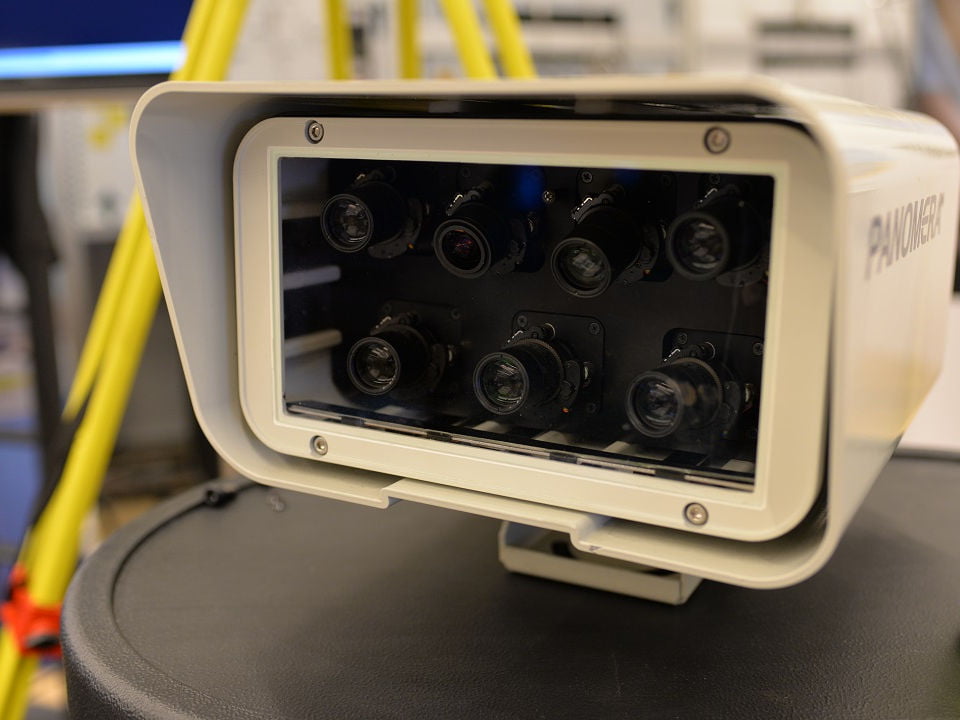
Maynard agrees lensing is a major factor with high resolution cameras.
“Lensing is certainly a major factor to consider when choosing high resolution cameras,” he says. “Typically, sensor format is quite large and therefore lenses need to be higher quality and size to achieve the required performance. Especially true in low light and long focal length situations, Dallmeier Panomera designers choose their lens optics very carefully to ensure each model in the range maximises image quality using top quality fixed focal length glass.”
Maynard believes that for installers working with high resolution CCTV applications first and foremost is education.
“Learn from the industry experts what is an appropriate level of hardware for the applications you are involved with,” he says. “There are excellent tools available to design with and many sources of data online or from wholesalers and manufacturers. Probably 2K and 3K is a good choice for the time being in most applications. This fits the bill for most IP work, doesn’t aggravate the IT department too much, and is not too heavy on management and storage. Some innovation will succeed, some will not – change is the only certainty, education is the key.”
Matthew Brabender, national enterprise sales manager at CSD says the purpose of surveillance is to know what is happening and who is involved.
“High resolution cameras give end users an incredibly clear picture into this fundamental. Camera development over the last few years have taken us from having a general idea of what is happening to acquiring evidence that is undisputable,” Brabender says. “The benefits of high resolution far outweigh any additional overheads that come with them. Networks are more capable and storage and camera costs have reduced.
“Additionally, security operations are becoming less hands-on when paired with intelligent platforms. Many customers are now choosing high resolution across their entire systems, as not only does it provide clear images, it allows single cameras to cover wider areas which reduces the cost of installation and offsets the need for more storage.”
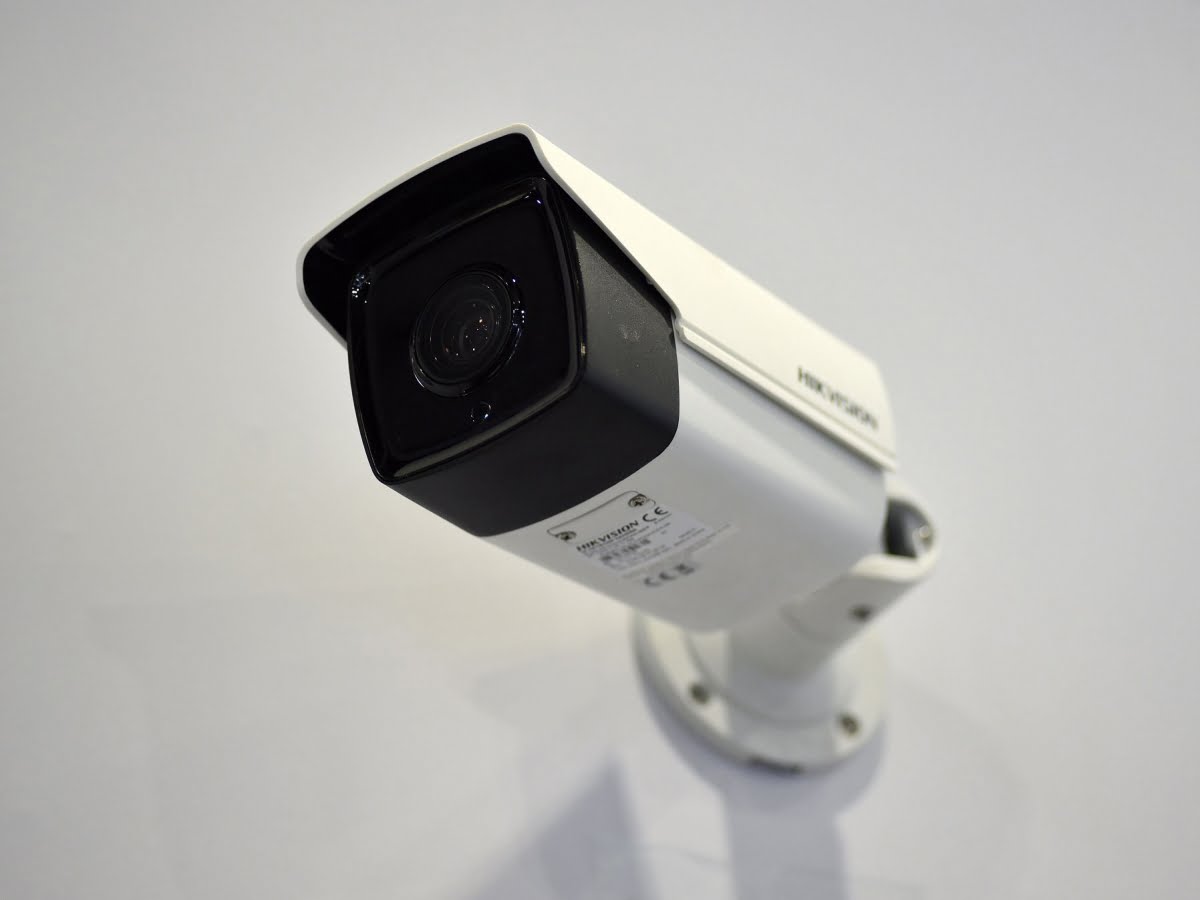
And Brabender agrees that many CCTV applications would benefit from high resolution cameras.
“The most requested application is to capture faces and license plates on 1 or 2 cameras, most commonly at entrances,” he says. “This request has existed for years, but with increase in resolutions, this type of application is now extremely reliable. Surveillance operators are using their systems as the core of their evidence as opposed to an idea on where to begin investigations.
“The perfect application is to marry high resolution images with an intelligent platform that can analyse the information and alert users. Cameras at entrances can be fed to license plate and facial recognition engines. High resolution cameras can survey very large areas and offer platforms like Axxonsoft enough clear information to reliably assess and report unwanted behaviour.”
Brabender’s says installers need to bear in mind that camera choice and positioning are key to a great performing system.
“With high resolution cameras, larger areas can be covered with fewer cameras so it’s important to re-evaluate where you might have typically placed cameras of lower resolution,” he says. “Low light performance has taken a giant leap but it’s always important to choose a camera that is designed to perform in those conditions. The right choice in camera will minimise noise in low light which will reduce bitrate and storage requirements.
“With that in mind, the best advice I can offer is to discuss the site requirements with your supplier so the latest and most suitable technology can be applied effectively. Lensing is very important, but development of this has followed the development of resolution. Manufacturers like Hikvision and Mobotix take great care in ensuring lenses are matched to cameras to give the best performance for their intended purpose.”
Does Brabender think there is a sweet spot with high resolution video surveillance – let’s say 4K – that gives the best balance of high resolution, live frame rate, cost and modest bitrate?
“Every year the range widens and customers more often than not mix resolutions to suit the application,” he says. “At the moment, anything from 2MP to 4k is a great choice. Small areas can be covered by 2-4MP, large areas can be covered by 4K. The sweet spot really is in the overall system; keeping a balance between camera types to meet the needs and budget of the customer.
“Something that helps is that the handling of data streams and compression, which is key to keeping high resolution usable, is improving. Codecs like H264+ and H265 have really advanced for the better, keeping storage and network requirements from outgrowing the budgets of customers.”
Andrew Cho of EOS agrees a high-resolution video surveillance can definitely bring benefits to the end user.
“The biggest benefit of the high the resolution camera is the image containing more information especially on a distanced object compared to the lower resolution camera,” Cho says. “But it may not always give greater benefits compared to lower resolution surveillance. Higher resolution surveillance will require more bandwidth, storage and a complexed image processor which all add up to the cost. So, it is beneficial for the end user to carefully select what is necessary for each environment. Furthermore, the usability of the image is relevant to the amount of the information the image contains and in some cases a low-resolution image can have much more information than the high-resolution image based on its performance to handle the harsh environment.
“The value of high resolution video surveillance depends on the environment,” Cho explains. “In a smaller application, such as a convenience store, low resolutions are more than sufficient to provide the information required by the surveillance equipment. However, in a larger application, there are areas where high resolution is required – a large open area, an environment where small details need to be identified, and an area where the detailed information is required from nearest focal to furthest focal point, are ideal applications for high resolution CCTV.
“When it comes to high resolution CCTV, there is no exact sweet spot. But in premium range, the 5MP-4K resolution is generally considered as the right resolution when a high-resolution image is considered. It is important to consider the aspect ratio used for the high-resolution image to have a natural view.”

Cho argues compression is a key consideration for installers and end users who need high resolution but don’t want the network burden that can be associated with it.
“Nowadays, high-resolution cameras must support the H.265 codec, which can use up to 40 per cent less bandwidth than H.264,” he says. “Further, there are few camera manufacturers who have a bandwidth utilization technology which can have a further reduction on the bandwidth usage. In our case, Hanwha Techwin has just recently released the X series camera with WISE STREAM II, which uses 6 different methods to reduce the bandwidth including the low pass filter, which eliminates noise in the image before it gets processed by the DSP.”
According to Kevin Saldanha, director of product management, Pelco by Schneider Electric, with all other factors held constant, a higher resolution camera will capture more information (pixels) within the field of view than a lower resolution camera. This leads to 2 types of user benefits, which depend on the goals and objectives of the surveillance system.
“The first is that for any particular minimum desired pixel density, a high-resolution camera can cover a larger field of view, which means that the number of cameras required to cover a project can be minimized while effectively increasing resolution,” he says.
“The second benefit is that for any particular field of view, a higher resolution camera captures more detailed information which drives the effectiveness of analytics — from the most basic form of analytics such as motion detection to something more advanced such as facial recognition.
“While these 2 types of benefits might appear similar to a lay person (and of course they are mathematically related), they are quite different for surveillance system designers, who start with the objectives of the system and then make camera and placement choices to best meet those objectives.”
“Benefits only exist with regard to the system objectives, and there are important factors that play into the cost/benefit balance for every camera coverage area on every project,” Saldanha says. “But the short answer is no, high resolution is not always the determining criteria, and insisting on their use will raise the cost of a project without providing additional benefits.
“For example, such a project might be designed only for intrusion detection in confined entry or storage spaces to visually confirm motion detector alarms. Because the field of view is small, and there is no need for highly detailed images, low resolution cameras will meet the project need at modest cost. The design of every system is a balancing act to best meet the needs of the project within the applicable constraints.”
It is fair to say one or 2 high resolution cameras would benefit most application,” he says.
“While the intrusion-confirmation example is possible, it is not the most common surveillance project configuration. Today, most installations must cover a range of views, including interior and exterior spaces, and close and distant views. Because of this range of application views, it is very likely that an assortment of camera models will be the best solution for the project, and that assortment is likely to benefit from the use of one or more high-resolution cameras.”
The perfect application for high resolution video surveillance, in Saldanha’s opinion is large with many potential areas of interest that must be covered simultaneously.
“High-resolution cameras are ideal for covering large areas wherein the chances of an incident of interest cannot be accurately predicted,” he says. “Conversely, they are also ideal where detailed imaging is required to identify specific objects, such as chips in a casino or the denominations of currency in a bank.
“For example, large area locations could include a public parking lot, or a transportation hub such as a train station or bus depot. In the parking lot example, a wide angle or panoramic view is preferred with sufficient resolution to capture details in the distance. In the transit hub application, a 360-degree panoramic view often works well with more emphasis on identifying individuals and objects at closer ranges.
“Part of the reason high resolution cameras better fulfil these applications is that many cameras and video management systems offer electronic PTZ capabilities that allow operators to zoom in on specific areas of interest, while the camera continues to capture and record the entire scene. Because the camera itself is high-resolution, zooming in on a portion of the view will retain enough pixels to support some level of detail. And, the action of inspecting a portion of the scene does not blind the system from recording the total view.
“In contrast, some users believe that PTZ cameras work better in these situations. They argue that such a camera can be left in a wide view condition and then zoom in when required to see an area of interest. But any part of the scene that is out of view of the zoomed area is no longer under surveillance. And, it is easy for an operator to leave a camera zoomed in when their interest moves to another screen, leaving the area compromised until someone notices and returns the camera to the wide view.”
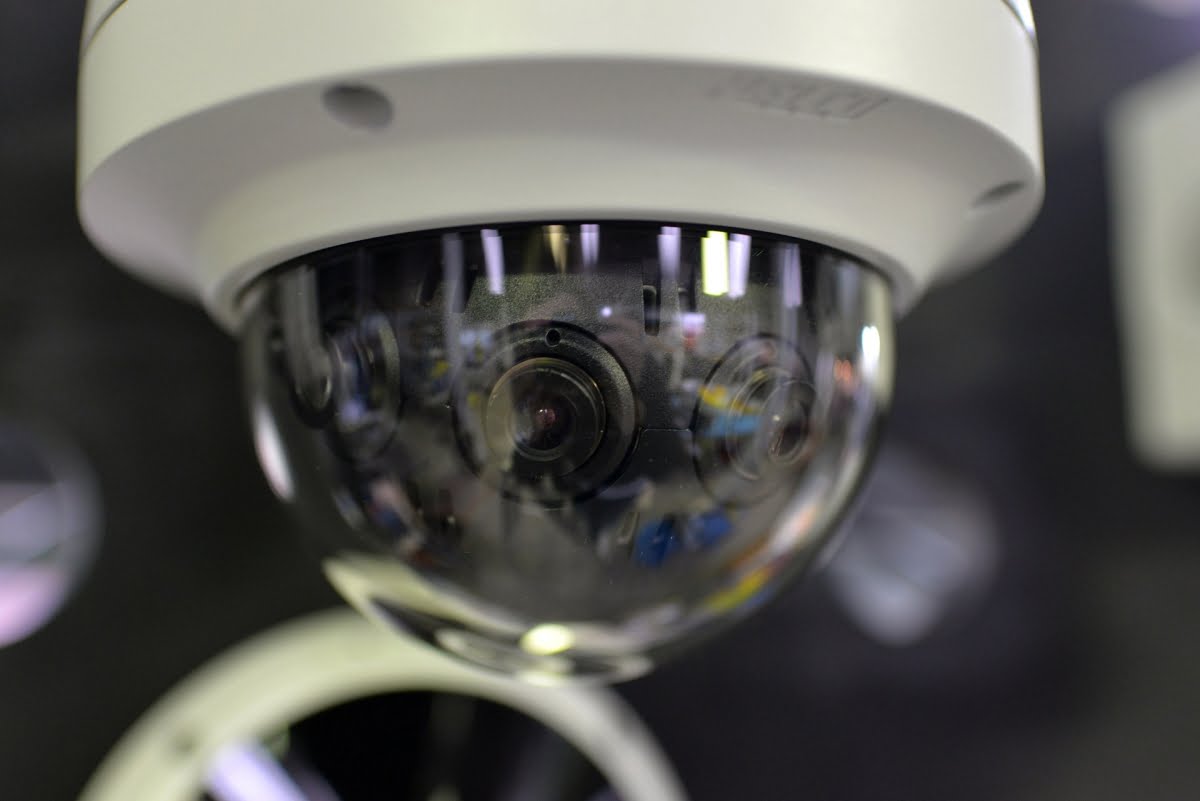
Saldanha’s advice to installers when it comes to high resolution video streams are firstly that high-resolution cameras benefit most from advances in intelligent compression technologies.
“Higher resolution cameras mean more information to process at the camera, more to transmit through the system, and more to store – every second,” he explains. “Great strides have been made in recent years in several aspects of image and video compression that dramatically reduce bandwidth and storage requirements.
“Look for the most advanced and intelligent compression available for the models under consideration. And, because each pixel in high-resolution cameras is generally smaller, they have a greater challenge to capture the available light in low-light conditions. Look carefully at the low light performance of the models under consideration if your application is likely to need to capture images in such conditions.
“Lastly, it is important to always remember that high resolution and fast frame rates consume more bandwidth. Look to deploy high resolution cameras with adjustable resolution and frame rate settings so you can minimize infrastructure requirements for transmission and recording until an incident is automatically or manually triggered, switching the camera to the desired resolution and frame rate.”
Do you think there is a sweet spot with high resolution video surveillance – let’s say 4K – that gives the best balance of high resolution, live frame rate, cost and modest bitrate?
“4K resolution is a consumer term, and refers to the UHD format, usually 3840 pixels wide by 2160 tall, or about 8 MP,” Saldanha says. “This is a fairly high resolution, and will work well to cover wide areas such as street intersections, parking lots, train station interiors, and so forth. But, using many 4K cameras will place demands on transmission, storage, and display hardware throughout the system. As mentioned above, it is not possible to define a best resolution without knowing where it will be applied and what its intended surveillance objectives are.
“Pelco has cameras with resolutions as low as 1.2 MP, and more than a dozen camera models with 12 MP resolution – much higher than 4K. Having a range of compatible cameras is the best way to match each camera with the unique needs of each installation location.”♦
By John Adams



